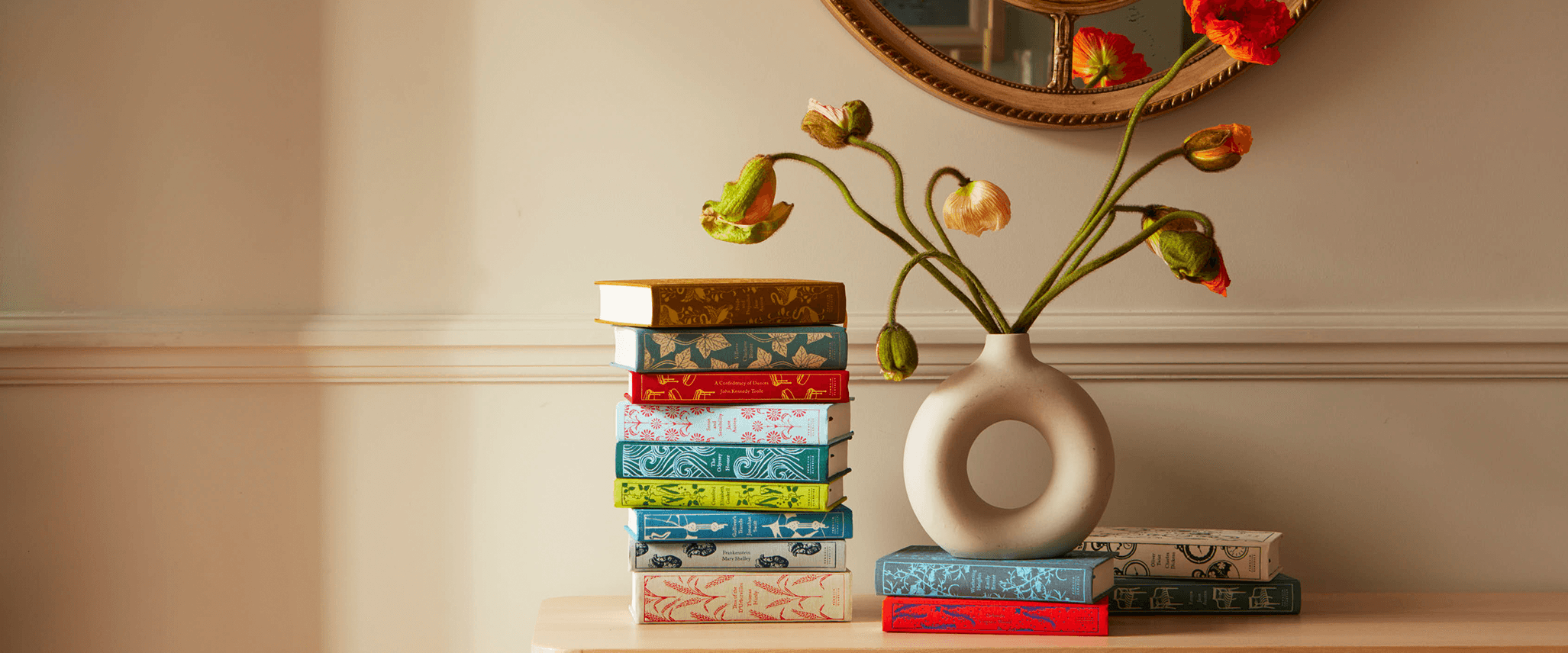In the early days of social distancing, Kensington Palace wanted to show us the Duke and Duchess of Cambridge were making do by working from home, just like the rest of us. When book cover designer Coralie Bickford-Smith woke up that morning, though, all she saw was a sea of Instagram notifications. Those were her re-designs of classic books that sat on Kate Middleton’s desk – the Penguin Clothbound Classics series.
‘There were hundreds of notifications. I was like, “What?” Eventually I found the photo and was going to screengrab to send to my sister, when a text from her came in to say, “Look, your books are on the front of The Daily Telegraph.” I was amazed, it was totally bonkers.’
But Bickford-Smith, who has been designing covers for Penguin since 2002, was more astonished, she says, by the fact that people knew who she was – and what her role had been in bringing the Clothbound Classics into being. ‘That was really cool. It seemed like these books had taken on a life of their own.’
'There was a shift towards making book beautiful again.'
It wasn’t the first time a major statesperson had picked up a Coralie Clothbound Classic: a few years ago Barack Obama had been given some, and they went back to the White House on Air Force One. They frequently pop up in films and music videos. Over the past 15 years, Bickford-Smith’s designs – never in more than two colours per cover, foil glinting in intricate, beguiling patterns over cloth – have come to represent a new generation of classic book. They invite us to start libraries of our own.
‘There was a shift towards making books really beautiful again,’ Bickford-Smith tells me about the creaton of the series back in 2005. ‘It was a reaction to the rise of the eBook. Everyone was worried about what would happen to publishing, whether print was dead.’
Bickford-Smith said she found inspiration in Kelmscott Press, which was founded by William Morris in the dying days of the Victorian era with a similar intention of making utterly desirable books. On just three presses, Kelmscott Press printed 52 exquisite tomes, with Morris painstakingly creating everything from hand, from the typefaces to the paper. ‘We couldn’t do that because everything was on a budget,’ she explains, ‘But wouldn’t it be amazing, we thought, to go back and create these things of beauty, that are cherished and pass down through generations.'
Today, there are more than 70 Clothbound Classics, with more on the way each year. All of them share Bickford-Smith’s original design fascinations: foil, cloth and pattern. ‘I just got really obsessed with how foil and cloth was used on Victorian bindings,’ she says, explaining that she rummaged through printers’ samples to unearth ‘amazing colours’ of both.
Editors were won over to the idea when Bickford-Smith - who has also written and illustrated three books of her own – pointed out that these books would do away with traditional dust jackets. Snags at the printers ensued – imprinting the foil pattern all the way around the book, rather than just on the spine meant they 'had to rebuilt the presses’ – but it was worth it. The designs were a near-instant success.

